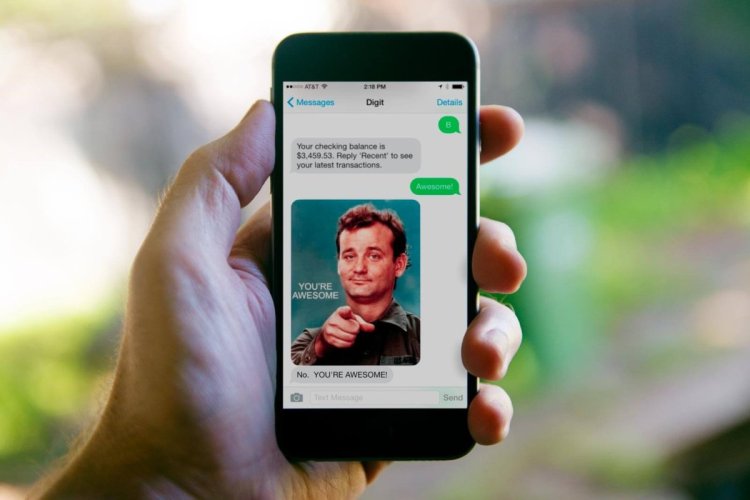2016 is over, and there’s no argument that big data, artificial intelligence (AI), and machine learning — terms often used interchangeably these days — have made their way into our daily lives. Whether it’s opening Google Maps for directions, shopping on Amazon, or watching movies on Netflix, 2016 was the year that bots truly hit mainstream.
This seismic development — which has critical implications for businesses, consumers, and, indeed, humankind — is the result of three developments that came to a head in 2016: First, an unprecedented capacity to analyze data; second, a backlash (limited though it was) to protect what data can be analyzed; and third, a welcoming of automation into our lives that we couldn’t have fathomed even a few years ago.
At this moment, we have more data than ever before. We’re creating information at a bewildering pace — approximately 2.5 quintillion bytes of data daily, which is enough to fill 57.5 billion iPads (at 32 gigabytes apiece). Big data is now a given, affecting every industry and function.
This data is gleaned from our smartphones (carried by more than 50 percent of the U.S. population), emails (294 billion daily), social media activities (hundreds of millions of posts), and more. As 2016 draws to a close, the next herculean task is not only to make order of this information, but to leverage it to help us become more efficient. All the data in the world is useless, unless you can turn it into actionable insights. Based on the sheer volume and unstructured nature of so much of that data, predictive analytics and machine learning have come to prominence in 2016 as the only way to truly put data to work.
For years, consumers freely gave up their data to advertisers, social networks, and the government for the sake of convenience or free services. That started to change in 2016, a direct result of more frequent cybersecurity breaches and counter-terrorism investigations that pose a threat to privacy rights.
People and institutions are now increasingly interested in holding on to their data, but only if they can do so without substantially changing their habits. Broadband companies like AT&T and Comcast need permission to collect private data. The European Union codified in law that the IP address coded in your computer is protected and personal. Apple continues to push the argument that “encryption is inherently great.”
On that last point, some tech companies are not only securing their data from the government, they’re also storing less of it so they won’t be compelled to share it. A premium is being placed not just on data itself, but also the security and liability concerns that data creates. When viewed together with the growth of big data, this means that artificial intelligence is increasingly widely available, but the most valuable data is and will continue to be controlled by far fewer entities.
Entities in regulated industries — financial institutions, health care organizations, education — encounter the opposite: They are required to collect and archive data. That presents an often-overlooked opportunity to tap into existing data sets that are too often simply stored for compliance purposes. This makes regulated industries particularly ripe for AI applications that put that data to work to responsibly disrupt entrenched operations and counteract rising costs.
As AI becomes increasingly commonplace, its novelty is starting to wear off. Siri, at one point revolutionary and the first consumer-grade application of AI, has almost taken a backseat to Alexa, Cortana, and Google Assistant. Voice recognition software is now mainstream; 39 percent of smartphone owners use it.
Robot butlers — and bots — are no longer just in your phone, either; they’re in your home. And they’re going to start coming to work with you more and more. Education (imagine a teacher with unlimited patience), retail (Amazon has 30,000 robots), and marketing are just three examples of where we saw predictive automation take hold over the course of 2016. All of this pales in comparison to the AI applications that will turn the world as we know it upside down: autonomous cars, health care diagnostics, fully autonomous drones, and more.
These bots may seem like an addition to our brains, but they’re really more of a natural extension of them. It’s vital to remember that AI applications and the algorithms that power them are only as good as the human minds that program them. This point was re-emphasized recently as voters in the U.S. election saw highly editorialized or outright inaccurate information in their Facebook newsfeeds. Bots aren’t entirely weird because they contain our biases and faults — something to keep in mind as the ethics debate of machine learning evolves.
If there can be three certain things in life, instead of two, it might be death, taxes, and data. The question for 2017 is who will have that data and how it will be secured. Culling, controlling, and channeling the 1s and 0s in the right direction is the next step. AI is going to be our greatest ally in making sense of the chaos, whether you’re a sales rep, a taxi driver, or a CEO.
VentureBeat's mission is to be a digital town square for technical decision-makers to gain knowledge about transformative enterprise technology and transact. Learn More

